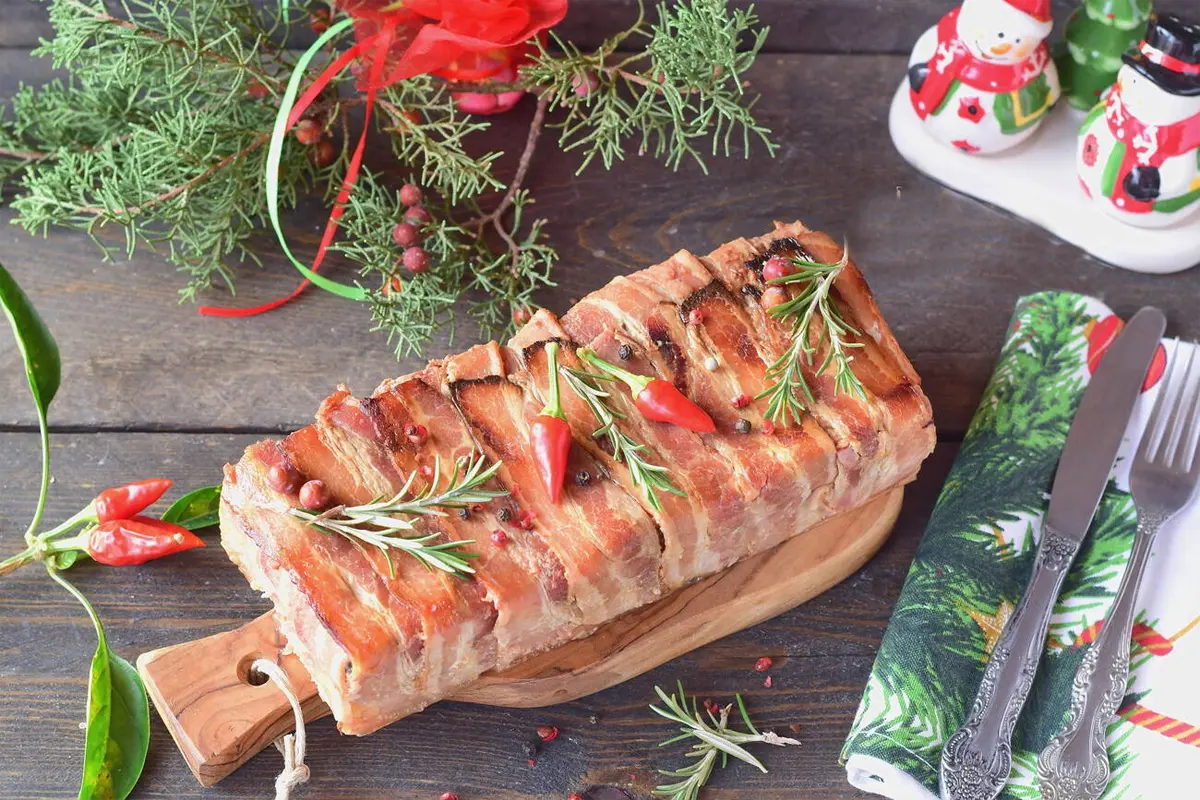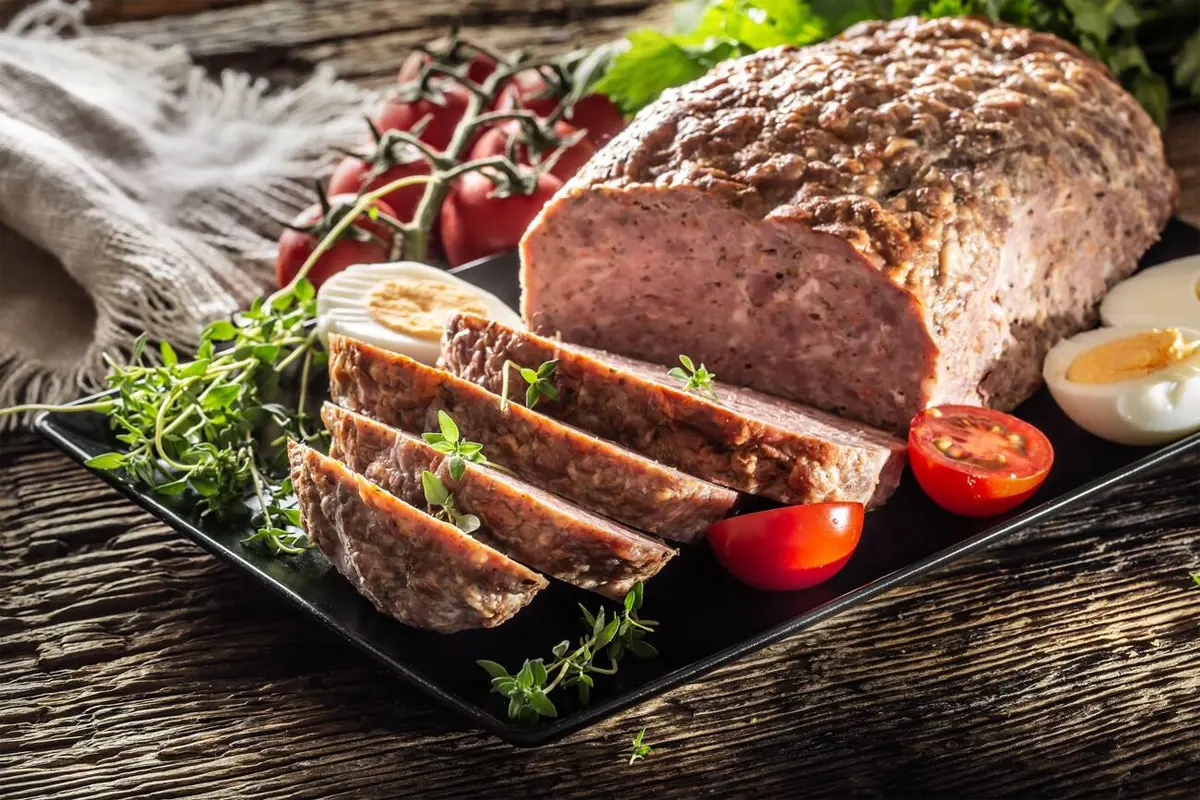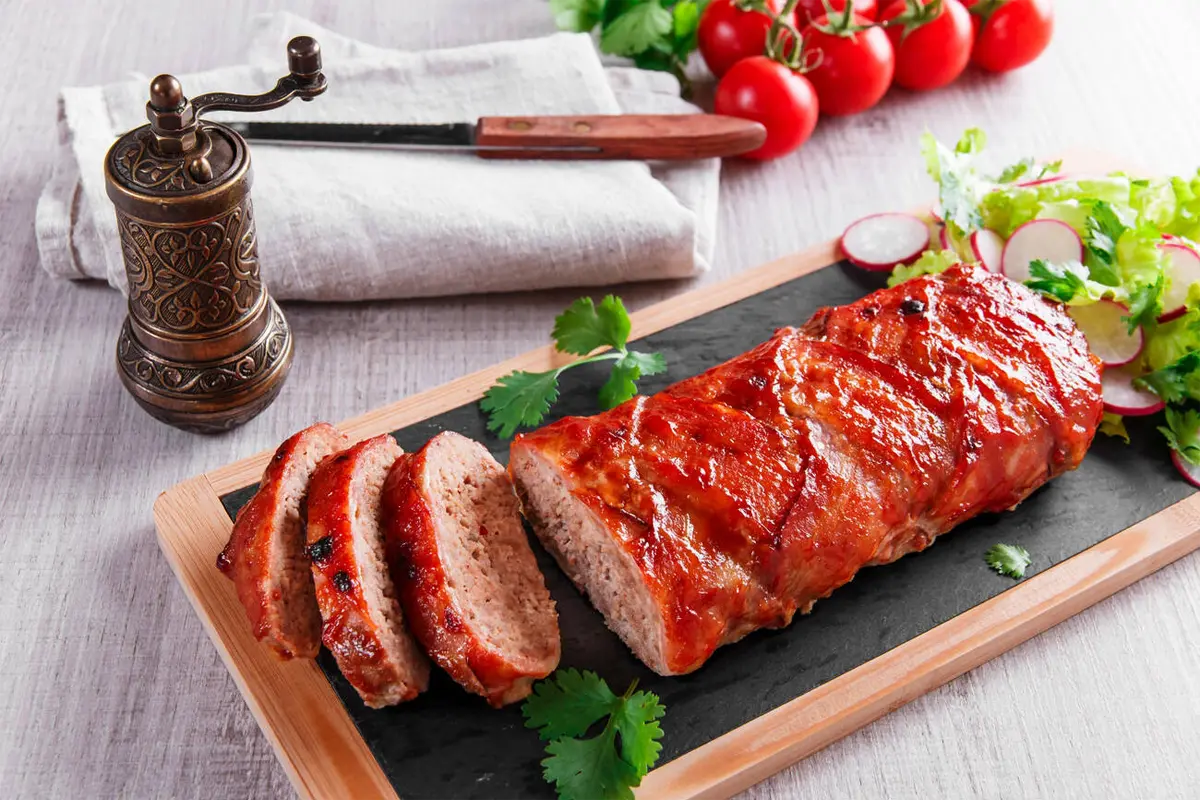Exploring meatloaf is like embarking on a culinary journey through time. In this article, we dive into the art of Meatloaf Mastery, from its historical roots to its enduring appeal. We’ll cover everything from selecting the right ingredients to offering a classic recipe with a twist, sharing essential cooking tips, and discussing the best ways to serve, store, and reinvent leftovers. We’ll also answer frequently asked questions and conclude with insights to enhance your skills in crafting the perfect meatloaf. So, let’s preheat our ovens and begin our exploration of meatloaf’s timeless charm.
The Timeless Appeal of Meatloaf
Meatloaf’s roots go deep in culinary history, evolving from a frugal dish to a global family favorite. Its journey from extending meat supplies to a beloved meal highlights cooking innovation and meatloaf’s versatility.
Why is meatloaf so cherished? Its simplicity and the warmth it brings to meals make it a comfort food staple, merging flavors and memories into a dish that feels like home. Its adaptability to different meats and openness to flavor experimentation keep it exciting. Whether using beef or turkey, meatloaf encourages culinary creativity, making it a generational staple.
Meatloaf also blends tradition with modern twists, maintaining its popularity by evoking nostalgia while incorporating new ideas. It stands as a symbol of home-cooked comfort, never fading in style.
Essential Ingredients for the Perfect Meatloaf
The Meat Base: Beef, Turkey, or Venison?
Firstly, the choice of meat is crucial. Beef offers a rich flavor, whereas turkey provides a leaner option. Venison, on the other hand, introduces a wild twist. Each type of meat guarantees a unique meatloaf experience.
Binders: The Role of Crackers and Breadcrumbs
Secondly, binders play a pivotal role. Crackers or breadcrumbs not only hold the meatloaf together but also contribute to its texture. They soak up moisture, ensuring the loaf is firm yet tender. Additionally, the type of binder can subtly influence the overall flavor.
Moisture and Flavor Enhancers: Milk, Eggs, and Onions
Finally, milk and eggs are key for adding moisture, which is essential to avoid a dry meatloaf. Onions, meanwhile, enrich the flavor, providing a savory depth. Together, these ingredients ensure a moist, tasty meatloaf every time.

Classic Meatloaf Recipe with a Twist
Ingredient List
To begin, gather the following ingredients:
- Ground beef: 1.5 pounds
- Breadcrumbs: 1 cup
- Milk: 1/2 cup
- Large egg: 1
- Finely chopped onion: 1/2 cup
- Minced garlic: 2 cloves
- Worcestershire sauce: 2 tablespoons
- Salt: 1 teaspoon
- Ground black pepper: 1/2 teaspoon
- Ketchup: 1/4 cup
- Brown sugar: 2 tablespoons
- Dijon mustard: 1 tablespoon
- Apricot preserves: 1/4 cup
Step-by-Step Directions
Follow these steps for a mouthwatering meatloaf:
- Firstly, preheat your oven to 350°F (175°C).
- Secondly, in a large bowl, mix the ground beef, breadcrumbs, milk, egg, onion, garlic, Worcestershire sauce, salt, and pepper. Do this until well combined but avoid overmixing.
- Next, shape the mixture into a loaf on a foil-lined baking sheet.
- Then, bake for 55 minutes.
Secret Sauce Recipe
Creating the apricot glaze involves these steps:
- Firstly, combine ketchup, brown sugar, Dijon mustard, and apricot preserves in a small saucepan.
- Secondly, cook over low heat, stirring until the sugar dissolves and the mixture is well combined.
- Finally, brush the glaze over the meatloaf 10 minutes before it finishes baking.
Advice: Tips for a Moist and Flavorful Meatloaf
For the best results, consider these tips:
- Initially, soak the breadcrumbs in milk. This helps keep the meatloaf moist.
- Additionally, use lean ground beef for a firmer loaf that still retains juiciness.
- Furthermore, mixing the ingredients by hand ensures even distribution without compacting the meat.
- Lastly, let the meatloaf rest for 10 minutes before slicing to retain its juices.
With this classic meatloaf recipe and the unique apricot glaze, you’ll enjoy a dish that’s both familiar and surprisingly new.
To further refine your culinary expertise and delve into the realm of comfort food with innovative twists, consider the following strategies:
Experiment with Meat Varieties
Switching up the type of meat used in your meatloaf can introduce new flavors and textures. Mixing ground pork or turkey with traditional beef can create a juicier or lighter meatloaf. Experimenting with different meat combinations can elevate the dish to new heights.
Incorporate Vegetables
Enhancing your meatloaf with a variety of finely chopped vegetables not only adds nutritional value but also injects vibrant colors and flavors into the meal. Vegetables such as bell peppers, carrots, or zucchini can also help maintain the moisture of the meatloaf, making it even more delectable.
Play with Glazes and Toppings
The apricot glaze is just the beginning. The culinary world offers a plethora of sauces and toppings that can transform your meatloaf. From a smoky barbecue glaze to a spicy chipotle topping or a tangy balsamic reduction, the possibilities are endless. Each option brings its unique twist to the classic dish.
Side Dishes Matter
Choosing the right side dishes can complement and enhance the richness of your meatloaf. Whether it’s roasted vegetables, creamy mashed potatoes, or a refreshing green salad, picking sides that balance the meal is key. For an innovative twist, consider sweet potato mash or a quinoa salad.
Leftover Magic
Transform your leftover meatloaf into new and exciting meals. Meatloaf sandwiches are just the beginning. Crumble it over a baked potato, mix it into pasta sauce, or add it to a hearty soup or stew for a delicious next-day meal.
Hosting a Meatloaf Dinner
Organize a themed dinner party centered around your meatloaf creation. Complement the meal with a selection of wines or craft beers that highlight the robust flavors of the meat and the sweet notes of the apricot glaze.
By embracing these approaches, you’ll not only perfect the art of making meatloaf but also discover the dish’s versatility and depth. Experimenting with various ingredients and techniques will keep your culinary adventure exciting and fulfilling.

Mastering Meatloaf: Cooking Tips and Techniques
Avoiding Common Cooking Mistakes
First, avoid overmixing the meat. Doing so can lead to a tough meatloaf. Gently mix the ingredients until just combined. Second, ensure even cooking. Shape your loaf uniformly. This prevents undercooked parts. Third, keep the meatloaf moist. Add wet ingredients like ketchup or milk to the mix. These tips help avoid a dry or crumbly finish.
How to Tell When Your Meatloaf is Perfectly Cooked
Cooking temperature and meatloaf consistency are key indicators of doneness. Use a meat thermometer. The internal temperature should reach 160°F (71°C) for safety. Another sign is the meatloaf pulling away from the sides of the pan. Avoiding cracks on top also suggests proper moisture levels. These signs indicate a perfectly cooked meatloaf.
By following these tips and paying attention to cooking temperature and meatloaf consistency, you can avoid common mistakes. This ensures a delicious, moist meatloaf every time.
To elevate your meatloaf mastery, consider these advanced tips:
Perfect Your Glaze Game
Experiment with glazes to add a unique finish. A mix of sweet, tangy, and spicy elements can enhance the flavor profile. Try glazes based on brown sugar, vinegar, or even fruit preserves for a delightful contrast to the savory meat.
Internal Flavors Matter
Incorporating fresh herbs, grated cheeses, or chopped nuts into your meat mixture can introduce unexpected textures and flavors. These additions can create a more complex and satisfying dish.
Let It Rest
Just like a good steak, allowing your meatloaf to rest after cooking is crucial. This pause lets the juices redistribute, ensuring a moist and tender slice. A 10-minute rest before slicing can make all the difference.
Experiment with Cooking Methods
While baking is traditional, don’t shy away from other cooking methods. Smoking your meatloaf can impart a deep, smoky flavor unachievable in a regular oven. Slow cooking, on the other hand, can yield an exceptionally tender meatloaf with minimal effort.
Side Dish Synergy
Think beyond the usual sides to complement your meatloaf. Consider side dishes that can absorb its rich flavors, such as polenta, couscous, or a vibrant beet salad. Matching the side dishes to the meatloaf’s flavor profile can elevate the entire meal.
Continuous Learning
The key to perfecting meatloaf, or any dish, lies in continuous experimentation and learning. Each attempt provides valuable lessons, whether it’s tweaking the ingredients, adjusting the cooking time, or experimenting with different glazes and fillings. Embrace the journey of culinary discovery, and your skills will grow with every dish you create.
Personalizing Your Meatloaf
Ingredient Substitutions and Variations
To fully unlock the potential of meatloaf, let’s start with a dash of creativity. Here are several ways to inject variety into your meatloaf recipes:
- Mix Up the Meats: First off, why stick to beef? You can explore turkey, chicken, or lamb. Each option brings its unique flavor profile to the table. Furthermore, mixing meats can introduce a delightful complexity to your dish.
- Veggie Boost: Secondly, think about enhancing both texture and nutrition by adding grated carrots, zucchini, or finely chopped mushrooms. Not only do these veggies add moisture, but they also make your meatloaf more wholesome.
- Grain Swaps: Additionally, for a healthier twist, consider substituting breadcrumbs with quinoa or rolled oats. This swap can offer both nutritional benefits and a new texture.
- Flavor Twists: Lastly, don’t hesitate to experiment with different herbs and spices. Whether it’s a touch of Italian seasoning or a dash of smoked paprika, these flavor twists can dramatically transform your meatloaf.
These variations pave the way for a meatloaf that’s customized to any taste or occasion.
Dietary Considerations: Making Gluten-Free and Low-Fat Meatloaf
When it comes to adapting meatloaf to meet dietary needs, a few smart adjustments can make all the difference:
- Gluten-Free Alternatives: For those avoiding gluten, gluten-free breadcrumbs or oats serve as excellent binders. This simple change ensures everyone can enjoy your meatloaf without worry.
- Lean Meats: Choosing lean ground turkey or chicken is a great way to reduce fat content. Importantly, these meats still keep the loaf juicy and flavorful.
- Vegan Meatloaf Options: For a vegan twist, combine lentils, black beans, and walnuts for a surprisingly meaty texture. A binder like flax or chia seeds, when soaked, can hold everything together.
- Flavor Variations: Moreover, to keep your meatloaf exciting without added fat, lean on the power of vibrant spices, fresh herbs, and rich tomato sauces.
Exploring these substitutions and variations not only respects dietary restrictions but also opens up a world of flavor. This approach ensures that your meatloaf remains a beloved dish on any table.
Serving Your Meatloaf With Style
Ideal Side Dishes
When it comes to serving meatloaf, the right side dishes can elevate the meal. Consider these options:
- Mashed Potatoes: A classic choice, creamy mashed potatoes complement the savory flavors of meatloaf perfectly.
- Roasted Vegetables: For a healthier option, roasted carrots, Brussels sprouts, or asparagus add color and nutrition.
- Garlic Bread: Garlic bread offers a crispy, flavorful counterpoint to the meatloaf’s tenderness.
Each side dish enhances the overall dining experience, offering a balance of textures and flavors.
Creative Presentation Ideas
How you present your meatloaf can turn a family dinner into a special occasion. Try these techniques:
- Slicing: Cut the meatloaf into thick slices for a hearty look. Serve each slice with a drizzle of extra sauce on top.
- Plating: Arrange your meatloaf slices atop a bed of mashed potatoes or next to a vibrant vegetable medley. This creates a visually appealing plate.
- Garnishing: Add a sprig of fresh herbs like rosemary or thyme to each plate for a touch of elegance and a burst of freshness.
By focusing on side dishes and presentation techniques, you make each meatloaf meal memorable. These ideas ensure that both the taste and the appearance of your dish impress every time.
Maximizing Leftovers: Storage Tips and Creative Recipes
How to Store and Reheat Meatloaf
Ensuring your meatloaf remains delicious the next day involves proper storage and reheating techniques:
- Cool Down: Allow meatloaf to cool to room temperature before storing. This prevents moisture buildup.
- Wrap Tightly: Wrap the meatloaf in plastic wrap or aluminum foil. You can also place it in an airtight container.
- Refrigerate: Store the wrapped meatloaf in the refrigerator. It will keep for 3-4 days.
- Reheat Gently: To reheat, place slices on a baking sheet and cover with foil. Warm in a 250°F oven until heated through. This method keeps the meatloaf moist.
Innovative Leftover Meatloaf Ideas
Leftover meatloaf offers a versatile base for creative dishes:
- Meatloaf Sandwiches: Slice the meatloaf and serve between bread with your favorite toppings. A smear of mayonnaise or a slice of cheese can add flavor.
- Meatloaf Salad: Chop up meatloaf and toss it into a salad for a protein boost. It pairs well with mixed greens, vegetables, and a tangy dressing.
- Stuffed Peppers: Fill bell peppers with a mixture of chopped meatloaf, rice, and sauce. Bake until the peppers are tender.
Using these storage tips and creative leftover ideas, you can enjoy your meatloaf in new and delicious ways. These strategies ensure not a single slice goes to waste
Meatloaf Mastery: Crafting the Perfect Loaf from Tradition to Table
Selecting Ingredients for Meatloaf Mastery
Discovering the best meats, binders, and flavor enhancers is essential. Each choice influences the meatloaf’s texture and taste, laying the foundation for Meatloaf Mastery.
Classic Meatloaf Recipe: A Mastery Twist
This section offers a twist on the traditional meatloaf, introducing unexpected ingredients for a modern flair. Perfecting this recipe is a step towards Meatloaf Mastery.
Essential Cooking Tips for Meatloaf Mastery
Mastering meatloaf involves more than just following a recipe. Learn the techniques that ensure a moist, flavorful loaf every time.
Serving Meatloaf with Mastery
Transforming a simple meatloaf into a culinary masterpiece is all about presentation and the right accompaniments. Tips for serving underscore the importance of Meatloaf Mastery.
Meatloaf Mastery: Storage and Creative Leftovers
Effective storage methods and innovative ideas for leftovers are part of Meatloaf Mastery. Extend the enjoyment of your meatloaf with these strategies.
Meatloaf Mastery FAQs
To round out our Meatloaf Mastery, we address common questions. Why does meatloaf sometimes fall apart? How long can you store it in the fridge? Can you substitute breadcrumbs with crackers? These answers and more help you refine your meatloaf-making process.
Embarking on the path to Meatloaf Mastery enriches not just your culinary skills but also your appreciation for this classic dish. Through experimenting with ingredients, techniques, and flavors, you’ll discover the joy and satisfaction of creating the perfect meatloaf that delights everyone at the table.
Why Does My Meatloaf Fall Apart?
One common reason meatloaf falls apart is the lack of sufficient binding agents. Ingredients like eggs and breadcrumbs play a crucial role in holding the mixture together. Therefore, ensuring you add enough of these can result in a meatloaf that stays intact and slices beautifully.
How Long Does Meatloaf Last in the Fridge?
When it comes to storage, properly stored meatloaf will remain good for 3-4 days in the refrigerator. To achieve this, make sure to wrap it tightly in plastic wrap or place it in an airtight container. This step helps to maintain its freshness and prevent it from drying out.
Can I Use Crackers Instead of Breadcrumbs?
Certainly, crushed crackers offer a fantastic alternative to breadcrumbs in meatloaf. They contribute a similar texture and serve as an effective binder, ensuring the meatloaf holds together well. Saltines or butter crackers, in particular, work excellently, providing a subtle flavor enhancement to the dish.
Wrapping Up: The Joy of Making Meatloaf
In conclusion, making meatloaf offers a unique blend of creativity and comfort. This journey invites you to experiment with ingredients, techniques, and flavors. Each variation brings its own delight. Embrace the process and enjoy the satisfaction of sharing your creations. The adventure of making meatloaf not only fills your home with warmth but also enriches your culinary skills. So, dive in, tweak the recipes, and relish the joy of cooking. Your perfect meatloaf awaits!
LSI and NLP Keywords:
- LSI Keywords: ground beef, breadcrumbs, loaf pan, oven temperature, moist meatloaf, comfort food, family dinner, meatloaf glaze, savory loaf, baking time.
- NLP Keywords: preparation tips, cooking hacks, meal planning, meatloaf variations, freezer-friendly, quick dinner ideas, meatloaf mix, seasoning blend, hearty meals, weeknight dinners.
Recommended External Links:
- USDA Guidelines on Ground Beef Safety – Anchor Text: “Ground Beef Safety”
- Food Network’s Side Dish Recipes – Anchor Text: “Perfect Side Dishes for Meatloaf”
- All About Meatloaf: History and Culture – Anchor Text: “The Cultural History of Meatloaf”

